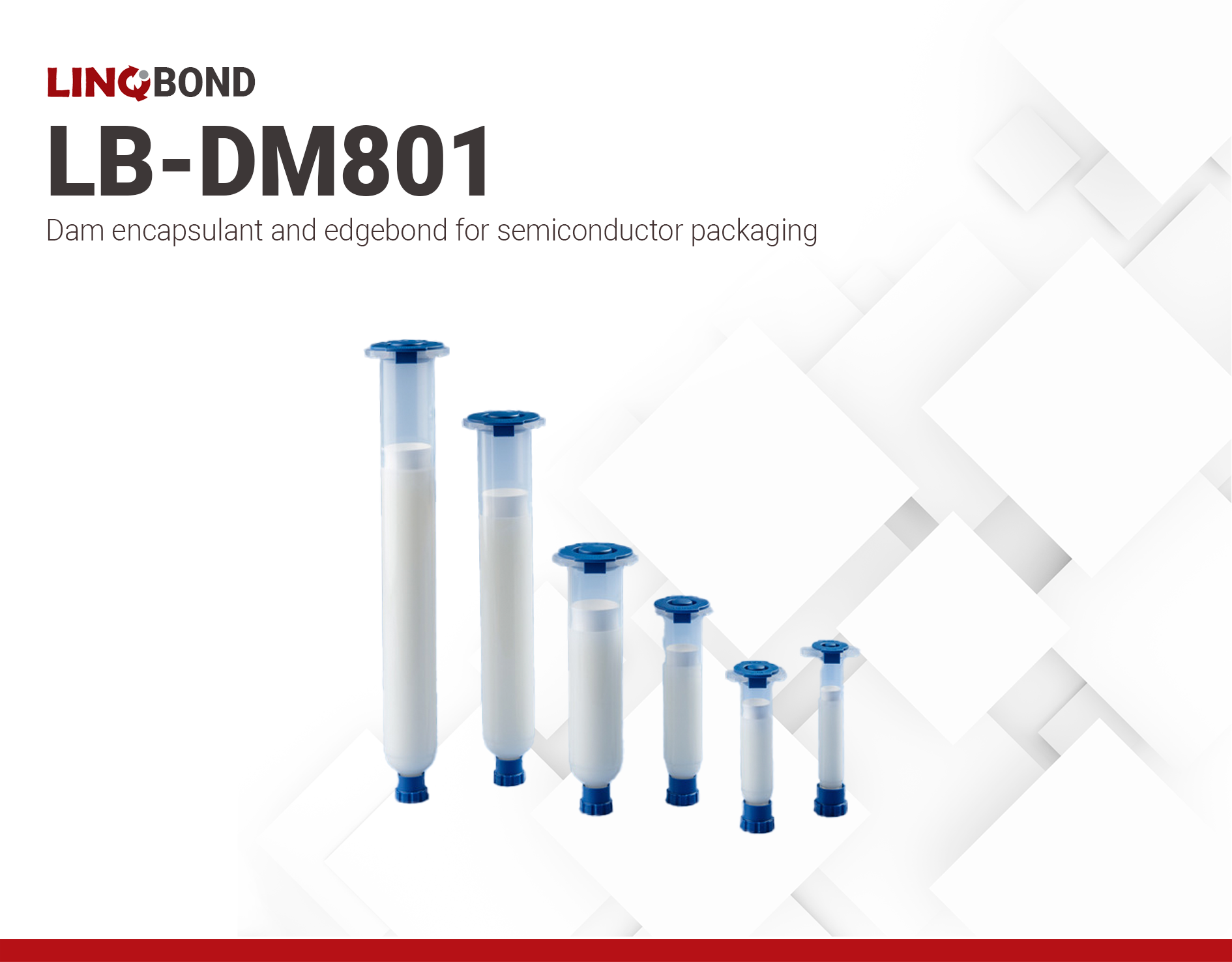LINQBOND LB-DM801 | Dam encapsulant
Harmonization Code : 3907.30.00.90 | Polyacetals, other polyethers and epoxide resins, in primary forms; polycarbonates, alkyd resins, polyallyl esters and other polyesters, in primary forms : Epoxide resins : Other
Main features
- Dam Encapsulant
- Low CTE
- High thixotropic index
Product Description
LINQBOND LB-DM801 is a high-performance, one-component epoxy adhesive specifically designed to work in conjunction with LB-FL501 as a dam material for semiconductor packaging. Together, these products provide a comprehensive solution for encapsulating and protecting electronic components.
With its low thermal expansion coefficient (CTE1: 20 ppm/°C, CTE2: 60 ppm/°C), LB-DM801 effectively prevents fill materials from spreading, ensuring precise control of encapsulant placement. Its thixotropic nature (TI: 3.1) and viscosity of 41800 cps at 25°C provide excellent sag resistance and dimensional stability, even on vertical surfaces.
Cure Schedule
- 40 minutes @ 150°C
- 20 minutes @ 160°C
Technical Specifications
| General Properties | |||||||
| |||||||
| Physical Properties | |||||||
| Thixotropic index Thixotropic index Thixotropic Index is a ratio of a material s viscosity at two different speeds in Ambient temperature, generally different by a factor of ten. A thixotropic material s viscosity will decrease as agitation or pressure is increased. It indicates the capability of a material to hold its shape. Mayonnaise is a great example of this. It holds its shape very well, but when a shear stress is applied, the material easily spreads. It helps in choosing a material in accordance to the application, dispense method and viscosity of a material. | 3.1 | ||||||
| Viscosity Viscosity Viscosity is a measurement of a fluid’s resistance to flow. Viscosity is commonly measured in centiPoise (cP). One cP is defined as the viscosity of water and all other viscosities are derived from this base. MPa is another common unit with a 1:1 conversion to cP. A product like honey would have a much higher viscosity -around 10,000 cPs- compared to water. As a result, honey would flow much slower out of a tipped glass than water would. The viscosity of a material can be decreased with an increase in temperature in order to better suit an application | 42000 mPa.s | ||||||
| Chemical Properties | |||||||
| |||||||
| Thermal Properties | |||||||
| |||||||
| Glass Transition Temperature (Tg) Glass Transition Temperature (Tg) The glass transition temperature for organic adhesives is a temperature region where the polymers change from glassy and brittle to soft and rubbery. Increasing the temperature further continues the softening process as the viscosity drops too. Temperatures between the glass transition temperature and below the decomposition point of the adhesive are the best region for bonding. The glass-transition temperature Tg of a material characterizes the range of temperatures over which this glass transition occurs. | 139 °C | ||||||



